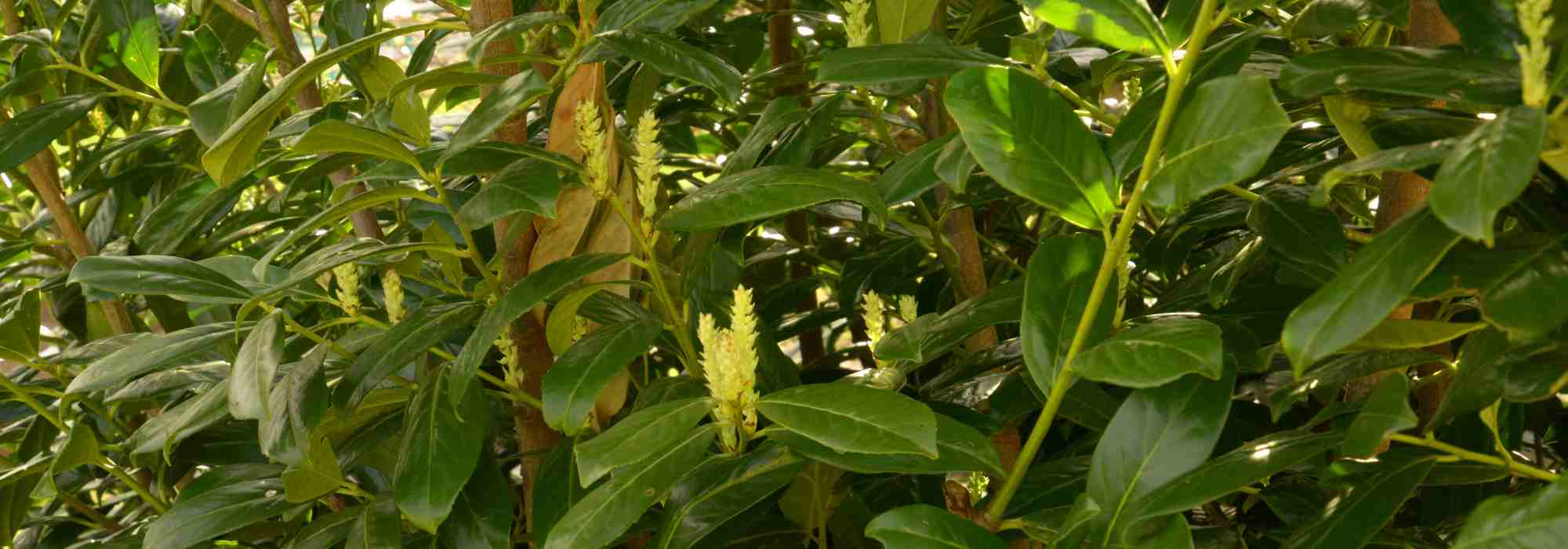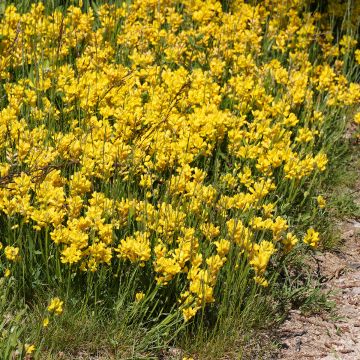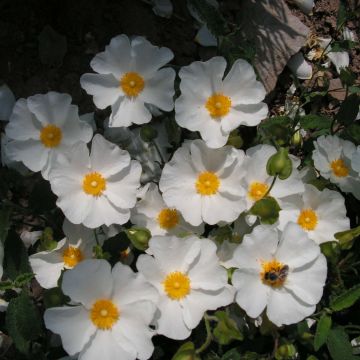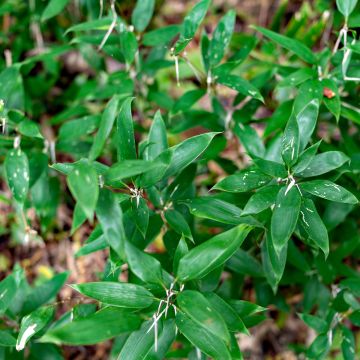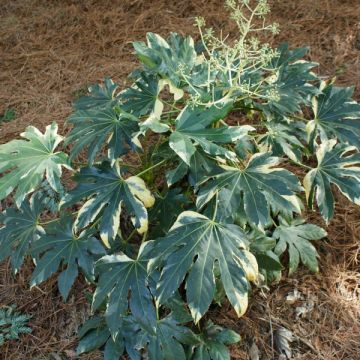

Viburnum x tinus Fairy Stars® - Laurustinus


Viburnum x tinus Fairy Stars® - Laurustinus
Viburnum x tinus Fairy Stars® - Laurustinus
Viburnum x tinus Fairy Stars®
Laurustinus
Special offer!
Receive a €20 voucher for any order over €90 (excluding delivery costs, credit notes, and plastic-free options)!
1- Add your favorite plants to your cart.
2- Once you have reached €90, confirm your order (you can even choose the delivery date!).
3- As soon as your order is shipped, you will receive an email containing your voucher code, valid for 3 months (90 days).
Your voucher is unique and can only be used once, for any order with a minimum value of €20, excluding delivery costs.
Can be combined with other current offers, non-divisible and non-refundable.
Why not try an alternative variety in stock?
View all →This plant carries a 24 months recovery warranty
More information
We guarantee the quality of our plants for a full growing cycle, and will replace at our expense any plant that fails to recover under normal climatic and planting conditions.
Would this plant suit my garden?
Set up your Plantfit profile →
Description
The Wayfaring Tree or Viburnum Fairy Stars® is a variety derived from Viburnum tinus or laurel tin very different from the usual wayfaring trees. It forms a compact and evergreen bush with small grey-green foliage edged in red, rounded and neat, covered in April and May with slightly scented, starry white umbels of flowers, carried on long stems. In autumn, the flowers are followed by red fruits that ripen and turn black. They are appreciated by garden birds. It is an excellent choice for small gardens and containers. A robust and carefree plant, it adapts to all exposures, even shade, and all soils, even very chalky and dry in summer. However, it requires a sheltered position from cold winds.
The laurel tin belongs to the caprifoliaceae family, or adoxaceae according to classifications. The species Viburnum tinus is native to the Mediterranean basin, found in undergrowth, forest edges, scrub vegetation, and maquis. It is a relatively cold-resistant evergreen bush (down to -15°C for short periods for an adult plant), which adapts to a wide range of soils as long as they are not too wet or waterlogged in winter. Its fruits are eaten by birds that 'sow' the plant under the trees they use as perches: it is typically an undergrowth bush that copes perfectly with the root competition of other trees.
Viburnum Fairy Stars, with relatively slow growth, forms a bushy, compact shrub, branching from the base. It reaches around 80 cm to 1 m in height and 1 m wide. Its branches bear narrower and more elegant leaves than the standard type. They are single, elliptical, pointed at their tips. With a leathery texture, they are slightly shiny and persist in winter. Flowering occurs in April and May. At the ends of the branches, inflorescences in cymes form, resembling small, round, slightly bulging bouquets. The buds open into small flowers of 2 to 3 mm in diameter, with 5 white petals. This slightly scented flowering is very popular with bees. After pollination, the flowers give way to ovoid berries measuring 4 to 5 mm long, initially red then a metallic blue-black, containing a single seed. In the laurel tin, the seeds need to be freed from their pulp to germinate: this naturally occurs in the digestive system of birds.
Easy to grow, compact, and with evergreen foliage, the laurel tin Fairy Stars is an ideal shrub for terraces and small gardens. It is essential for creating a durable plant structure, particularly in hot and dry regions where it thrives. Tolerant of shade and root competition, it pairs perfectly with Sarcococca or sacred bamboos. Thanks to its good resistance to repeated pruning, the laurel tin is perfect for topiary art, allowing for sculpting original shapes in its dense foliage.
Plant habit
Flowering
Foliage
Botanical data
Viburnum
x tinus
Fairy Stars®
Viburnaceae
Laurustinus
Cultivar or hybrid
Other Laurustinus (Viburnum tinus)
View all →Planting and care
The Viburnum tinus Fairy Stars is a very tolerant bush regarding soil and exposure. Nevertheless, to ensure a good start for this young plant, make sure to plant it in a deeply worked soil to allow its roots to descend more quickly. In hot and dry climates, it is best planted in early autumn, while in areas with borderline hardiness, a spring planting will be preferable. An adult bush will withstand short frosts of around -12/-15°C, in well-drained soil and a sheltered location, regrowing from the stump if its vegetation has been damaged. Water abundantly but spaced out during the first two or three summers to help the bush establish well. Afterwards, it will do without water completely in summer, even in hot and dry regions. It is advisable to shelter young plants under a winter veil if significant frosts are forecast, especially during the first winters. The laurel tin tolerates limestone and clay soils well in dry climates. It also tolerates slightly acidic soils, both compact and moist in winter if there is no frost. It has no notable enemies in our gardens. This bush is very well adapted to drought and summer heat. It responds well to pruning, allowing it to be shaped into a hedge or topiary. The laurel tin readily self-seeds in the garden (especially under roosting trees), thanks to birds: remove the young plants as soon as you spot them.
Planting period
Intended location
Care
Planting & care advice
This item has not been reviewed yet - be the first to leave a review about it.
Similar products
Haven't found what you were looking for?
Hardiness is the lowest winter temperature a plant can endure without suffering serious damage or even dying. However, hardiness is affected by location (a sheltered area, such as a patio), protection (winter cover) and soil type (hardiness is improved by well-drained soil).

Photo Sharing Terms & Conditions
In order to encourage gardeners to interact and share their experiences, Promesse de fleurs offers various media enabling content to be uploaded onto its Site - in particular via the ‘Photo sharing’ module.
The User agrees to refrain from:
- Posting any content that is illegal, prejudicial, insulting, racist, inciteful to hatred, revisionist, contrary to public decency, that infringes on privacy or on the privacy rights of third parties, in particular the publicity rights of persons and goods, intellectual property rights, or the right to privacy.
- Submitting content on behalf of a third party;
- Impersonate the identity of a third party and/or publish any personal information about a third party;
In general, the User undertakes to refrain from any unethical behaviour.
All Content (in particular text, comments, files, images, photos, videos, creative works, etc.), which may be subject to property or intellectual property rights, image or other private rights, shall remain the property of the User, subject to the limited rights granted by the terms of the licence granted by Promesse de fleurs as stated below. Users are at liberty to publish or not to publish such Content on the Site, notably via the ‘Photo Sharing’ facility, and accept that this Content shall be made public and freely accessible, notably on the Internet.
Users further acknowledge, undertake to have ,and guarantee that they hold all necessary rights and permissions to publish such material on the Site, in particular with regard to the legislation in force pertaining to any privacy, property, intellectual property, image, or contractual rights, or rights of any other nature. By publishing such Content on the Site, Users acknowledge accepting full liability as publishers of the Content within the meaning of the law, and grant Promesse de fleurs, free of charge, an inclusive, worldwide licence for the said Content for the entire duration of its publication, including all reproduction, representation, up/downloading, displaying, performing, transmission, and storage rights.
Users also grant permission for their name to be linked to the Content and accept that this link may not always be made available.
By engaging in posting material, Users consent to their Content becoming automatically accessible on the Internet, in particular on other sites and/or blogs and/or web pages of the Promesse de fleurs site, including in particular social pages and the Promesse de fleurs catalogue.
Users may secure the removal of entrusted content free of charge by issuing a simple request via our contact form.
The flowering period indicated on our website applies to countries and regions located in USDA zone 8 (France, the United Kingdom, Ireland, the Netherlands, etc.)
It will vary according to where you live:
- In zones 9 to 10 (Italy, Spain, Greece, etc.), flowering will occur about 2 to 4 weeks earlier.
- In zones 6 to 7 (Germany, Poland, Slovenia, and lower mountainous regions), flowering will be delayed by 2 to 3 weeks.
- In zone 5 (Central Europe, Scandinavia), blooming will be delayed by 3 to 5 weeks.
In temperate climates, pruning of spring-flowering shrubs (forsythia, spireas, etc.) should be done just after flowering.
Pruning of summer-flowering shrubs (Indian Lilac, Perovskia, etc.) can be done in winter or spring.
In cold regions as well as with frost-sensitive plants, avoid pruning too early when severe frosts may still occur.
The planting period indicated on our website applies to countries and regions located in USDA zone 8 (France, United Kingdom, Ireland, Netherlands).
It will vary according to where you live:
- In Mediterranean zones (Marseille, Madrid, Milan, etc.), autumn and winter are the best planting periods.
- In continental zones (Strasbourg, Munich, Vienna, etc.), delay planting by 2 to 3 weeks in spring and bring it forward by 2 to 4 weeks in autumn.
- In mountainous regions (the Alps, Pyrenees, Carpathians, etc.), it is best to plant in late spring (May-June) or late summer (August-September).
The harvesting period indicated on our website applies to countries and regions in USDA zone 8 (France, England, Ireland, the Netherlands).
In colder areas (Scandinavia, Poland, Austria...) fruit and vegetable harvests are likely to be delayed by 3-4 weeks.
In warmer areas (Italy, Spain, Greece, etc.), harvesting will probably take place earlier, depending on weather conditions.
The sowing periods indicated on our website apply to countries and regions within USDA Zone 8 (France, UK, Ireland, Netherlands).
In colder areas (Scandinavia, Poland, Austria...), delay any outdoor sowing by 3-4 weeks, or sow under glass.
In warmer climes (Italy, Spain, Greece, etc.), bring outdoor sowing forward by a few weeks.








































